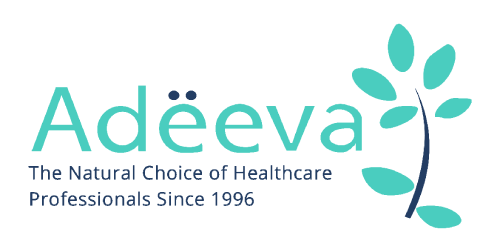
LMU 87 – Battling PCOS: The Soy Solution
Source: Journal of Clinical Endocrinology & Metabolism (August 2016)
Lifestyle Medicine Update
Introduction
In the intricate realm of women’s health, Polycystic Ovarian Syndrome (PCOS) stands as a formidable challenge. This complex disorder embraces a range of symptoms, from irregular periods and ovarian cysts to elevated male hormone levels and insulin resistance. For years, the quest for solutions navigated uncharted waters, with soy-based interventions poised as a potential remedy. The whispers of biological plausibility hinted at the synergy between soy and PCOS management, yet concrete evidence remained elusive. However, in a groundbreaking study published in the Journal of Clinical Endocrinology & Metabolism in August 2016, a new dawn emerged, illuminating the transformative potential of soy isoflavones in PCOS management.
The Blossoming Promise of Soy Isoflavones
A tapestry of health recommendations unfurls, woven with the threads of soy isoflavones, offering a beacon of hope to those grappling with PCOS. Traditionally rooted in biological plausibility, these recommendations have remained a cornerstone in empowering women to take charge of their health. However, the landscape shifted dramatically with the publication of a seminal study that validated the efficacy of soy isoflavones in PCOS management. This study, a testament to scientific rigor, comprised 70 women aged 18 to 40, each bearing the weight of a PCOS diagnosis. The participants embarked on a transformative journey, guided by the power of soy isoflavones, with 50 mg/day etching a path toward change.
The Science Unveiled: A Journey of Transformation
As the weeks unfolded, the study’s findings resonated with profound significance. A symphony of change echoed through reduced blood levels of insulin and testosterone—two pivotal factors driving the PCOS narrative. The roots of PCOS often intertwine with elevated insulin levels and insulin resistance, sparking the production of ovarian cysts. Simultaneously, male hormone levels like testosterone and dihydrotestosterone, weave their own narrative, deepening the presence of ovarian cysts. Soy isoflavone supplementation, like a skilful conductor, orchestrated a shift, unwinding the tendrils of insulin and testosterone, while also lowering cholesterol and triglyceride levels—an added boon.
The Mechanisms at Play: The Dance of Balance
As the curtain lifts on the mechanisms underpinning soy isoflavone’s transformative touch, a tale of protection and inhibition unfolds. Taurine, a sentinel of brain health, shields against inflammation, toxins, and protein deficiencies, while casting a tempering influence on the nervous system’s tempestuous activity. A masterful dance of moderation ensues, as overactivity of the brain and the ensuing surge of dopamine levels, intrinsic to PCOS, encounter Taurine’s tranquil sway.
A Symphony of Complementary Strategies: The Path to Empowerment
As the pages of research unfurl, they unveil a tapestry of complementary strategies that entwine with soy isoflavones to craft a holistic solution for PCOS management. Weight reduction, a herald of transformation, stands as a potent ally for those journeying through the landscape of PCOS. Aerobic exercise, with its ability to bolster insulin sensitivity and melt away excess body fat, emerges as a partner in the dance of empowerment.
In the chorus of nutritional medicine, cruciferous vegetables like broccoli, brussels sprouts, cabbage, and cauliflower rise, attuned to the rhythm of regulation and detoxification. Saw palmetto strides forward, a guardian that thwarts the conversion of testosterone to dihydrotestosterone. The stage widens to embrace the embrace of Essential Fatty Acids—fish oil, flaxseed oil, borage seed oil—mighty warriors in the battle against inflammation and hastened cell division rates.
A Promising Tomorrow: Echoes of Hope
As we contemplate the resonance of this research, a symphony of transformation plays out for the 5-10% of women aged 15-45 who bear the mantle of PCOS. Amidst the challenges of ovarian cysts, pain, and heightened infertility, a chorus of solutions emerges—rebalancing hormonal cascades, igniting ovulatory cycles, and kindling sparks of hope. As doctors listen to the echoes of this research, their practice transforms, embracing a holistic care that weds tradition with innovation, offering healing and renewal to those embarking on the PCOS journey.
References
- Mehri Jamilian, Zatollah Asemi. The Effects of Soy Isoflavones on Metabolic Status of Patients With Polycystic Ovary Syndrome. The Journal of Clinical Endocrinology & Metabolism, 2016; jc.2016-1762 [DOI]
https://doi.org/10.1210/jc.2016-1762
Eat Smart, Live Well, Look Great
Dr. Meschino

Dr. James Meschino
ABOUT THE AUTHOR
Dr. James Meschino, DC, MS, ROHP, is an educator, author, and researcher having lectured to thousands of healthcare professionals across North America. He holds a Master’s Degree in Science with specialties in human nutrition and biology and is recognized as an expert in the field of nutrition, anti-aging, fitness, and wellness as well as the author of numerous books.


